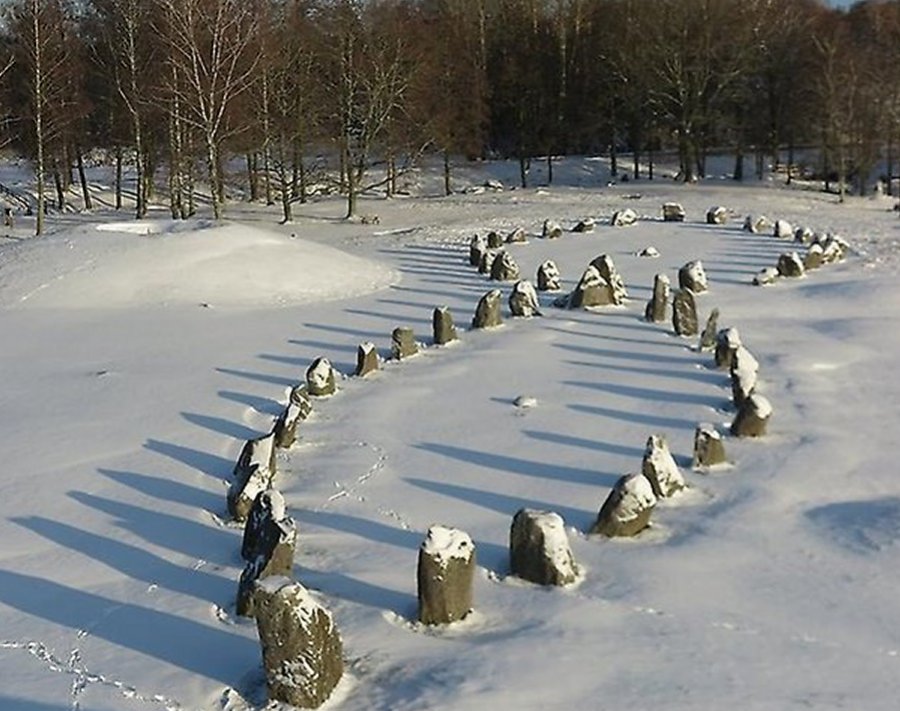Anundshög Burial Mound: One Of Sweden’s Richest And Largest Sacred Ancient Sites
A. Sutherland - AncientPages.com - Anundshög is a burial mound from about 500-700 AD; it is 9 meters (30 ft) high and 60 meters (200 ft) wide, and this is the largest burial mound in Sweden.
Anundshög, located near Västerås in Västmanland, Sweden, contains 12 mounds, ten stone circles, 14 standing stones, and one imposing rune stone. There are also five stone ships of various sizes, the largest of which is 53 meters long and 16 meters wide, in the vicinity of the mound.
Image credit: Anundshög
Many believe the area was a significant center of royal power during the Iron Age and was also important around the 1300s. Anundshög was a part of Eric Street (in Swedish: 'Eriksgata'), and several of the stones in the area mark this traditional path through which the chosen king rode past with his escort to get his royal power confirmed by the people.
Many people participated in the building of the Anundshög burial mound in Sweden. It was made of clay and used to burn the dead, whose remains were covered with a cairn of stones, turf, and soil. The remains around Anundshög clearly show that the area was the core of a prestigious power center during the Iron Age.
Although the site contains many graves, people report the positive energies of the place and several healing areas (one of them is the stone ship).
It seems that in early medieval times, someone deliberately tried to wipe out the power center and weaken its importance. The stone ships were destroyed, and a runestone was overthrown.
The original name of the site is not preserved and remains unknown. During the Middle Ages, the site's name was replaced, and since then, all know it as 'Anundshög.'
Left: The runestone at Anundshög has a pattern and a runic inscription, different from other runes in Sweden. Image credit: www.anundshog.se Right: Image credit: Christer Johansson - CC BY-SA 2.5
Were the burial mound and its name associated with the legendary Swedish king Anund ('trail-blazer) Bröt-Anund or 'Anund the Land Clearer' who reigned during the early 600s, or did the name originate from the large runestone at the site?
Anundshög site has 11 smaller burial mounds, most of which were looted a long time ago; there are also ten stone circles between 6 to 30 meters in diameter.
The damage to the site during the 1600s could be related to the advent of Christianity when similar sites were no longer accepted.
Researchers restored four of the five ships, and the fifth ship setting is still to recover.
"Folkvid raised all of these stones after his son Heden, Anund's brother. Vred carved the runes..."
The runestone at Anundshög has a pattern and a runic inscription, different from other runes in Sweden.
"Folkvid raised all of these stones after his son Heden, Anund's brother. Vred carved the runes..."
A man named Folkvid ordered the construction of the stone ships in the 1000s and helped to construct them.
In the middle of the runestone, a man and a woman are depicted, and according to the inscription:
+ fulkuiþr + raisti + stainn + þasi + ala + at + sun + + sin + hiþin + bruþur + anutaR + uraiþr hik + runaR
The runestone was overturned and moss-grown back in the 1660s, according to Runic Inscriptions 'Ransakningarna' 1667.
Tibble maze, used for all kinds of rites and dated to 100's, is located only 800 meters from Anundshög; formed of 2000-3000 stone, it represents one of Sweden's labyrinths, usually used in fertility rituals or to contact the spirit world with the help of shamans, or medicine men.
Written by – A. Sutherland AncientPages.com Staff Writer
Updated on January 27, 2023
Copyright © AncientPages.com All rights reserved. This material may not be published, broadcast, rewritten or redistributed in whole or part without the express written permission of AncientPages.com
Expand for referencesMore From Ancient Pages
-
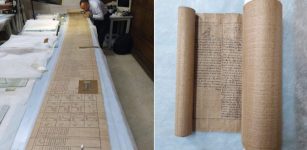 Never-Before-Seen 16 Meters Long Ancient Egyptian Papyrus Unveiled To The Public
Artifacts | Feb 21, 2023
Never-Before-Seen 16 Meters Long Ancient Egyptian Papyrus Unveiled To The Public
Artifacts | Feb 21, 2023 -
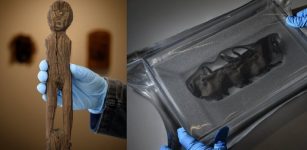 Ancient Artifacts Hidden Beneath The Ice In Danger As Glaciers Are Melting
Archaeology | Oct 19, 2020
Ancient Artifacts Hidden Beneath The Ice In Danger As Glaciers Are Melting
Archaeology | Oct 19, 2020 -
 Indigenous Communities Used The Caribbean Sea As An Aquatic Highway
Archaeology | Jun 23, 2022
Indigenous Communities Used The Caribbean Sea As An Aquatic Highway
Archaeology | Jun 23, 2022 -
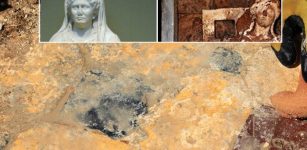 Sun Disk Unearthed On 3,500-Year-Old Rock Altar In Thracian Settlement, Edirne, NW Turkey
Archaeology | Sep 26, 2020
Sun Disk Unearthed On 3,500-Year-Old Rock Altar In Thracian Settlement, Edirne, NW Turkey
Archaeology | Sep 26, 2020 -
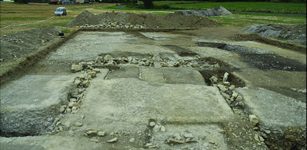 Stone Homes Of Europe’s First Megalithic Builders Discovered
Archaeology | Feb 22, 2023
Stone Homes Of Europe’s First Megalithic Builders Discovered
Archaeology | Feb 22, 2023 -
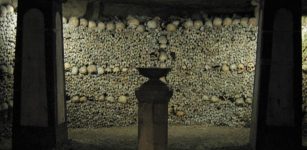 Paris Catacombs: Huge Underground Labyrinth Full Of Secrets
Featured Stories | Jan 3, 2016
Paris Catacombs: Huge Underground Labyrinth Full Of Secrets
Featured Stories | Jan 3, 2016 -
 Catherine Of Valois – Scandalous Queen Who Caused Drama Even After Her Death
Featured Stories | Feb 4, 2019
Catherine Of Valois – Scandalous Queen Who Caused Drama Even After Her Death
Featured Stories | Feb 4, 2019 -
 Forbidden Knowledge: Secret Ancient Gates Of The Shining Ones – The Beginning – Part 1
Featured Stories | Jul 12, 2019
Forbidden Knowledge: Secret Ancient Gates Of The Shining Ones – The Beginning – Part 1
Featured Stories | Jul 12, 2019 -
 Mysterious Kola Pyramids Built By An Unknown Lost Ancient Civilization Can Rewrite Ancient History
Civilizations | Aug 3, 2020
Mysterious Kola Pyramids Built By An Unknown Lost Ancient Civilization Can Rewrite Ancient History
Civilizations | Aug 3, 2020 -
 Secrets Of A Lake That Could Re-Write Ancient History Of America – Myths And Gods Reveal A Complex Story – Part 1
Civilizations | Jun 4, 2018
Secrets Of A Lake That Could Re-Write Ancient History Of America – Myths And Gods Reveal A Complex Story – Part 1
Civilizations | Jun 4, 2018 -
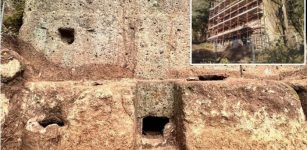 Who Is Buried In The Giant Etruscan Tomb At San Giuliano Necropolis?
Archaeology | Mar 13, 2024
Who Is Buried In The Giant Etruscan Tomb At San Giuliano Necropolis?
Archaeology | Mar 13, 2024 -
 Incredible Treasure Discovered In The Secret Chamber Of The Great Pyramid 1,200 Years Ago May Offer Proof Of Long-Lost Scientific Knowledge
Artifacts | Dec 31, 2018
Incredible Treasure Discovered In The Secret Chamber Of The Great Pyramid 1,200 Years Ago May Offer Proof Of Long-Lost Scientific Knowledge
Artifacts | Dec 31, 2018 -
 New Light On Appearance Of Scythians In Northern Black Sea Region
Archaeology | Mar 11, 2017
New Light On Appearance Of Scythians In Northern Black Sea Region
Archaeology | Mar 11, 2017 -
 European Neolithic Family Trees Shed Light On Social Organization
Archaeology | Jul 27, 2023
European Neolithic Family Trees Shed Light On Social Organization
Archaeology | Jul 27, 2023 -
 Migration Of Early Humans Out Of Africa Began Thousands Of Years Earlier Than Previously Thought
Archaeology | Dec 18, 2017
Migration Of Early Humans Out Of Africa Began Thousands Of Years Earlier Than Previously Thought
Archaeology | Dec 18, 2017 -
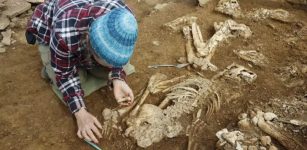 Riddle Of Orkney’s Lost Tomb – Fascinating Neolithic Discovery
Featured Stories | Nov 15, 2023
Riddle Of Orkney’s Lost Tomb – Fascinating Neolithic Discovery
Featured Stories | Nov 15, 2023 -
 First Time A Meteorite Killed A Person In Known History Revealed In Old Documents
Archaeology | Apr 29, 2020
First Time A Meteorite Killed A Person In Known History Revealed In Old Documents
Archaeology | Apr 29, 2020 -
 Ancient People Handled Sun Exposure Better Than Modern People – An Anthropologist Explains Why
Featured Stories | Sep 21, 2022
Ancient People Handled Sun Exposure Better Than Modern People – An Anthropologist Explains Why
Featured Stories | Sep 21, 2022 -
 Sun: Highest Cosmic Power Worshiped By Ancient People And Represented By Deities
Featured Stories | Apr 1, 2019
Sun: Highest Cosmic Power Worshiped By Ancient People And Represented By Deities
Featured Stories | Apr 1, 2019 -
 Mystery Of The Knights Templar – Did A Secret Ancient Meeting Determine The Real Purpose Of The Christian Knights? Part 1
Featured Stories | Aug 20, 2019
Mystery Of The Knights Templar – Did A Secret Ancient Meeting Determine The Real Purpose Of The Christian Knights? Part 1
Featured Stories | Aug 20, 2019

